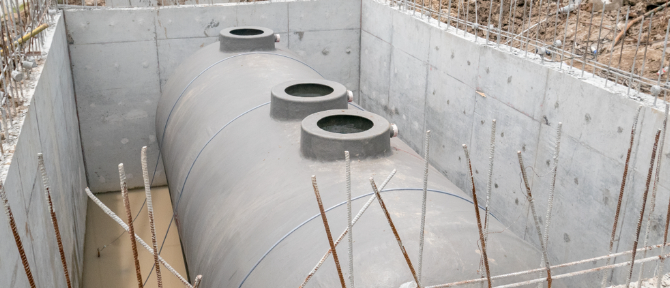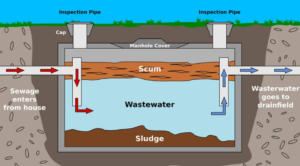
A septic tank is a type of on-site sewage treatment chamber normally used in rural areas where there is no access to a centralised system. It’s a small-scale sewage treatment system that is installed under the ground on which a property is built.

How does a septic tank work?
A septic tank works by collecting and treating wastewater from toilets, sinks, kitchens, and other household fixtures. The tank allows solid waste to settle at the bottom while allowing liquid effluent to flow out into a drainage field for further treatment in the surrounding soil.
The solid waste that settles in the tank undergoes bacterial decomposition. Over time, this material at the bottom breaks down, and the partially treated liquid effluent flows out for further treatment in the soil. House Digest has some information on the types of plants you should avoid growing around your septic tank covers.
Should septic tanks be maintained?
It’s important for septic tanks to be regularly maintained and emptied to prevent the accumulation of sludge. In the UK, there are regulations and guidelines in place to govern the installation, use, and maintenance of septic tanks to protect people’s health and the environment.
Should your septic tank drain pipe become damaged, this will require a swift repair. If you require drain lining in Oldbury, there are a number of professionals you can turn to. The process of drain lining Oldbury is a method carried out by experienced professionals to repair broken pipes of varying degrees of severity.

What are the warning signs that your tank is full?
If your drains are backing up, your pipes are making gurgling sounds or your water drains slowly, this suggests that your tank is full. You may also find that your toilet doesn’t fully flush or flushes very slowly.
